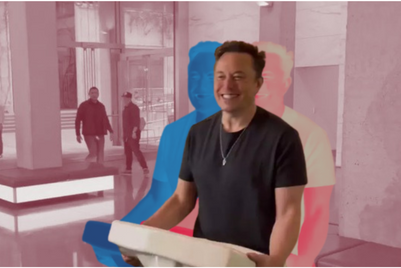
Twitter CEO Linda Yaccarino is working on new ways to win back advertisers that have fled the platform under Elon Musk’s leadership, the Financial Times has reported.
She plans to roll out full-screen video ads that will show under Twitter’s short-form video feed. Musk previously said in a Twitter post that the platform’s algorithm will favor native video content and reward it with higher distribution in an effort to cut down on the volume of recycled TikToks, Reels and Shorts.
Yaccarino has also told investors that she aims to streamline commerce on Twitter. One method involves building a digital wallet.
Twitter will also lean into partnerships old and new, as it looks to expand on existing contracts with tech platforms. In particular, it is building a relationship with Google surrounding access to Twitter’s data for advertising.
Yaccarrino, who is a seasoned media exec, is also putting Twitter’s sales team on a charm offensive. She emphasized planning in-person meetups, which she called “hand-to-hand combat,” with media partners, talent agencies and publishers to bring more big names to the platform. Twitter also aims to pair creators, celebrities and politicians with advertisers for brand deals and sponsorships.
Media execs, for their part, are not totally sold.
While they find these investments promising, they note that Yaccarino’s plans don’t address their biggest concern about Twitter: brand safety issues that have plagued the platform under Musk’s watch.
According to Katrina Stroh, VP at Media+, “leaning harder into a performance-based ad model will attract more advertisers less concerned with brand safety and more focused on e-commerce and return on investment.”
“I think Yaccarino is throwing a lot of ideas at the wall in an effort to think about different directions she can take Twitter, but ultimately, given the strong negative perception around brand safety… and given video is a primary channel used for brand awareness campaigns, it will certainly be a harder sell to skeptical advertisers already investing in safer video environments for their campaigns," she added.
Stroh said that Yaccarino’s plans to simplify commerce stood out because they fit into Twitter’s text-heavy user experience.
When it comes to short-form video, Twitter is “way behind the competition in advertising sophistication,” she added.
Noah Mallin, chief strategy officer at IMGN Media, agreed that unclear user verification, spam and hate speech are much bigger concerns for advertisers than Twitter becoming another place to post TikTok content.
“The idea that somehow video and video ads are going to be the silver bullet doesn’t quite add up,” he said. “It didn’t work when publishers tried it, and I don’t believe it will be the thing that saves Twitter.”
He added that brands may come back in the short term “in deference to” Yaccarino’s ad expertise and strong relationships, but they won’t stick around unless she starts to make Twitter a safer place to be.
Yaccarino, for her part, has started to address the brand safety issue. According to the Wall Street Journal, she has advocated that Twitter rejoin Tech Coalition, an organization focused on fighting child sexual abuse online. Yaccarino approved the $40,000 annual dues to rejoin after Twitter let its membership expire.




.jpg&h=334&w=500&q=100&v=20250320&c=1)
.jpg&h=334&w=500&q=100&v=20250320&c=1)



.png&h=334&w=500&q=100&v=20250320&c=1)
.png&h=334&w=500&q=100&v=20250320&c=1)


.jpg&h=268&w=401&q=100&v=20250320&c=1)



.jpg&h=268&w=401&q=100&v=20250320&c=1)

